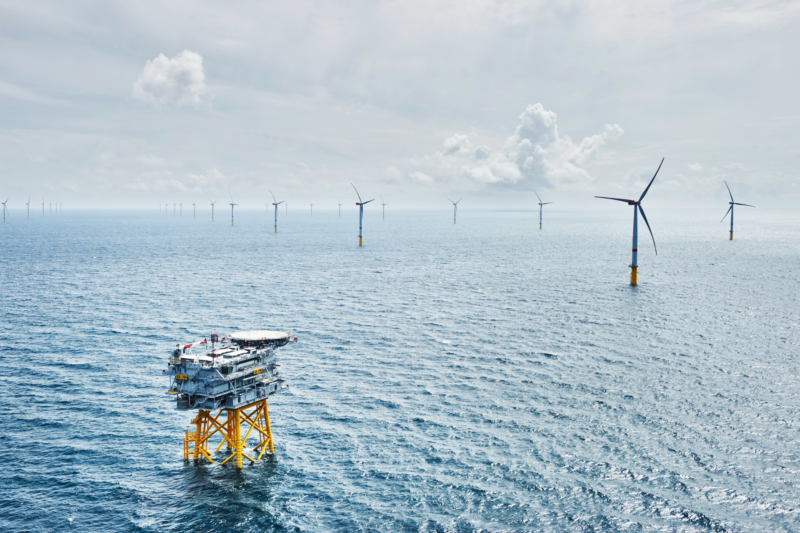Solution provider

One of Europe’s largest producers and retailers of electricity and heat.
Case
Wind energy


One of Europe’s largest producers and retailers of electricity and heat.
Add the case to your visit request and let us know that you are interested in visiting Denmark
Located 22 kilometres off the coast of Holland in the North Sea are the Hollandse Kust Zuid offshore wind farms. Spanning an area of 235.8km², the Hollandse Kust Zuid wind farm zone consists of four sites, with an individual capacity of approximately 350 MW each. The rights to construct and operate them were bundled into two tenders by the Dutch government, the Hollandse Kust Zuid wind farm sites I & II, and the Hollandse Kust Zuid wind farm sites III & IV. Vattenfall won the tender for I & II in December 2017 and III & IV in July 2019.
When all four farms are completed, they will collectively comprise Europe’s largest, subsidy-free offshore wind farm. That is, offshore wind farms without any guaranteed feed-in tariff. The wind power generated by the offshore wind farms will be supplied to electricity consumers across the Netherlands via the national high voltage grid.
Blades the size of a football field
Siemens Gamesa’s 10 MW wind turbines will be used to power the farms – 152 of them to be exact. With a rotor diameter of 193m and a blade length of 94 metres – which is almost the same length as a football field - the turbines are 30 per cent mere effective at generating electricity from offshore wind than older models. This means that less turbines are needed, which will lessen the environmental impact of the farm. Furthermore, a smaller amount of turbines leads to lower expenses and reduced risks during the installation phase.
Five phases of construction
Construction of the Hollandse Kust Zuid I & II offshore wind farms are already underway, with an expected completion date of 2023. Hollandse Kust Zuid III & IV is set to commence construction in 2022 and needs to be operational within five years in order to retain its permit.
Construction of the offshore wind farms is divided into five different phases:
Phase 1: Suvery of seabed in the North Sea
Phase 2: Design and tendering
Phase 3: Equipment production
Phase 4: Installation of wind turbines
Phase 5: Wind farm commissioned
Subsidy free offshore wind
The cost of offshore wind turbines has fallen dramatically in recent years: in 2018, costs were 70 per cent lower than in 2013. These price developments have made it possible for the Dutch government to successfully launch the very first subsidy-free tender for an offshore wind farm ever: first with Hollandse Kust Zuid I & II in 2017 and again for Hollandse Kust Zuid III & IV in 2019. Vattenfall is able to complete the project without the financial help of the Dutch government as the government guarantees the licence and network connections in their tender. This means that the risks involved, and thus the inherent costs, have dropped dramatically.
11.5GW of offshore wind by 2030
The Netherlands is intent on reducing its greenhouse gas emissions and seeks to cover 16 per cent of the country’s energy consumption by clean energy by 20203. Wind energy has been highlighted by the government as a key means with which to achieve this target.
This was illustrated by the release of the Dutch government’s Offshore Wind Energy Roadmap 2030 in 2018, which laid out the government’s plans for the development of additional 7GW of offshore wind capacity in the 2024-2030 period. This included details on which zones will be released for development in the Dutch sector of the North Sea, when this will occur, their projected generation capacity and when they are expected to be operational.
Under the current National Energy Agreement concluded in 2013, five offshore wind farms with a total capacity of 3.5GW will be constructed in the Dutch area of the North Sea by 2023, in addition to existing wind farms, which represent a capacity of 1GW. In total, the Netherlands aims to have 11.5GW of operating offshore wind capacity by 2030, which would cover 40 per cent of the country’s current electricity consumption.